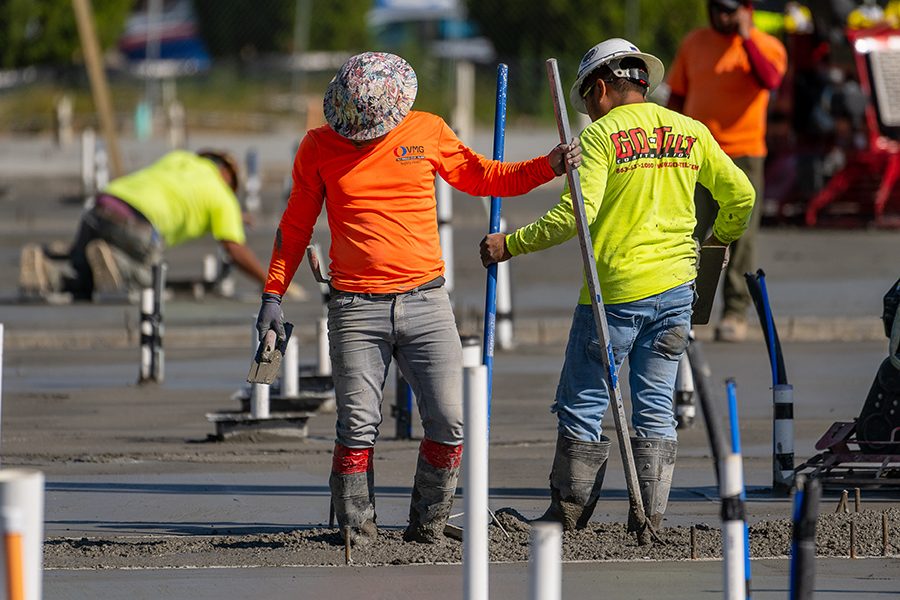
Home » L&I director weighs in on minimum wage, workers’ comp hikes
L&I director weighs in on minimum wage, workers’ comp hikes

November 10, 2023
Washington is poised to raise the minimum wage again at the beginning of next year, keeping it at the highest state-level in the nation. Together with proposed increases to workers’ compensation rates, the topics can be hot button issues for small business owners who often place the blame at the foot of the state Department of Labor & Industries, the agency that calculates and oversees the rate increases.
“When we go to $16.28 (minimum wage) in 2024, we don’t want that to catch any worker or business off guard,” said Joel Sacks, director of the state department of L&I.
 Joel Sacks
Joel Sacks“When we go to $16.28 (minimum wage) in 2024, we don’t want that to catch any worker or business off guard,” said Joel Sacks, director of the state department of L&I.
The 3.4% increase takes effect Jan. 1, 2024, and applies to workers ages 16 and older. The number isn’t arbitrary; it’s part of a state law passed by the voters that directs L&I to calculate the wage by comparing the Consumer Price Index (CPI) for urban wage earners and clerical workers from August of the last year to the current year to determine the minimum hourly rate workers will be paid.
“That essentially ties minimum wage increases to inflation to keep up with the rising cost of living,” said Sacks, who reminds employers not to “shoot the messenger.”
“The law is very specific about the equation used to calculate the minimum wage and the month it happens every year. L&I’s role in determining the minimum wage is to do the math and announce the results to employers and workers,” he said.
Workers’ comp
It may be little consolation to employers who see that increase paired with proposed hikes to 2024 workers’ compensation rates as a one-two punch to their bottom line.
Washington is unique in that about a quarter of insurance for injured workers is paid by the state’s pool of workers, with the remainder supplied by employers. Elsewhere, most rates come from a percentage of payroll, so when wages go up, the state collects more premiums.
But in Washington, employers pay based on hours worked, which results in the state covering the cost of higher wages with higher workers’ comp rates.
A proposed 4.9% increase for 2024 comes on the heels of a 4.8% increase last year, a move the Association of Washington Businesses was quick to criticize.
“This may seem like a small increase when viewed alone, but it follows multiple years of rate hikes,” said Kris Johnson, AWB president, in a statement.
“Over the last two years, workers’ comp rates have increased nearly 10% in Washington while other states continue to lower their rates. It comes on top of other pressures, including unemployment insurance, paid family and medical leave and the nation’s highest workers’ compensation benefits paid.”
But the state’s L&I leader points out it didn’t increase rates during the pandemic, thanks to a contingency reserve built up during good economic years, just for times like that.
Now, a multitude of factors go into these decisions. “We have core principles that impact workers’ comp rate proposals,” Sacks said. “First, we want to keep rate changes – whether going up or down – steady and predictable. Second, we want to maintain an adequate workers’ compensation contingency reserve. And third, we want to do everything we can to help workers heal and go back to work. It’s what is best for the worker and for the workers’ compensation system.”
A safety emphasis
The agency said it also has avoided even larger rate increases by keeping an emphasis on safety. Sacks said proposed increases also are tied to both higher health care costs and higher wages for workers, “which means the cost of replacing wages when a worker gets hurt is also going up. Since we didn’t raise rates during the pandemic, the cost numbers alone indicated we needed about a 10% average increase.”
It’s little comfort to Johnson. “Washington is already an expensive state to do business in and unfortunately this proposed 4.9% average rate increase in workers’ compensation insurance will only make it more expensive for employers dealing with extraordinary inflationary pressures. This is an average rate increase, for some, the increase will be as high as 20% while others may get no increase,” he said in a statement.
Gig economy
A recent change to workers’ compensation brought rideshare drivers under the plan to provide full coverage while on the job in a sector known as the “gig” economy, those one-off jobs that also cover service roles like DoorDash.
“The Legislature has started to respond to these challenges by ensuring rights for workers driving for companies like Lyft and Uber – providing access to paid sick time, workers’ compensation, and minimum pay standards,” Sacks said. They also provided protection for drivers against retaliation and directed L&I to set up a Drivers Resource Center, so drivers have a pathway to appeal when removed from the platform unfairly.
Sacks expects more changes to come, citing the support from both lawmakers and residents when it comes to worker safety, along with paid sick leave and overtime.
These gig positions have grown and evolved over the last decade, along with the demand for online services and deliveries, resulting in more distribution centers throughout the nation for mega-retailers, like Amazon.
This also has come with pressures and quotas for workers to fulfill hundreds of requests during a given shift. Sacks says state lawmakers have responded to the growth of this industry with new laws to protect those facing quotas or performance standards, applying to workers at the AutoZone distribution center and Amazon’s two warehouses, both in Pasco. Opening dates for the warehouses have not yet been announced.
“Among those protections was making sure workers with a quota have transparency, so they know what the quota is and when it changes,” Sacks said. “Quotas also can’t create a new danger of injury in the workplace. That means they can’t be structured so they get in the way of basic rights, like bathroom breaks, or don’t provide workers with the time they need to use necessary safety equipment. Finally, workers can’t be punished for not meeting a quota that violates these new standards.”
Looking ahead
Sacks said the new legislative session will include rulemaking, “a process that involves input from stakeholders, workers, businesses and others to implement these new requirements and ensure a way to enforce the new rights.”
Ergonomics are also an important piece for warehouse and assembly line workers, including those at meat and food processing plants in the region. Repeated motions, lifting, carrying or twisting may create a risk of injury not seen when these movements are done independently.
The head of L&I said some of the most common causes of injuries and deaths on the job are often preventable, and it’s the agency’s mission to “keep Washington safe and working.”
Sacks said state inspectors are often frustrated by the lack of use of basic safety equipment.
“We know fall protection, like harnesses and anchor points, save workers’ lives. We know that using rollover protection and seatbelts on a tractor is an effective way to stop workers from being killed. The knowledge and technology are there, we just need to make sure employers are using it,” he said.
L&I offers a no-cost consultation program to assess workplace conditions and make recommendations for improvements.
“We can help employers build a safety program, training, identify hazards and follow applicable safety rules without the threat of a fine or penalty for anything uncovered during the consult,” Sacks said. “It could mean the difference in whether a worker gets to go home to their family at the end of the day.”
Request a consultation online at bit.ly/LIRequestConsult.
Local News
KEYWORDS november 2023




